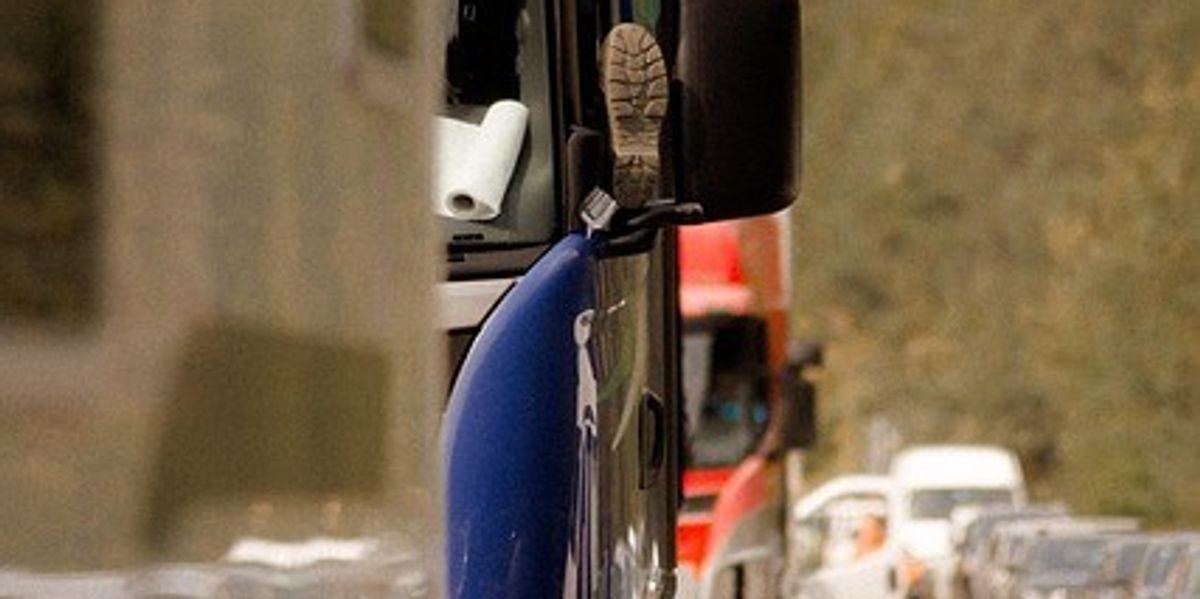New Jersey is home to the most congested freight bottleneck in the country for the seventh straight year, according to research from the American Transportation Research Institute (ATRI), released today.
ATRI’s annual list of the Top 100 Truck Bottlenecks aims to highlight the nation’s most congested highways and help local, state, and federal governments target funding to areas most in need of relief. The data show ways to reduce chokepoints, lower emissions, and drive economic growth, according to the researchers.
The 2025 Top Truck Bottleneck List measures the level of truck-involved congestion at more than 325 locations on the national highway system. The analysis is based on an extensive database of freight truck GPS data and uses several customized software applications and analysis methods, along with terabytes of data from trucking operations, to produce a congestion impact ranking for each location. The bottleneck locations detailed in the latest ATRI list represent the top 100 congested locations, although ATRI continuously monitors more than 325 freight-critical locations, the group said.
For the seventh straight year, the intersection of I-95 and State Route 4 near the George Washington Bridge in Fort Lee, New Jersey, is the top freight bottleneck in the country. The remaining top 10 bottlenecks include: Chicago, I-294 at I-290/I-88; Houston, I-45 at I-69/US 59; Atlanta, I-285 at I-85 (North); Nashville: I-24/I-40 at I-440 (East); Atlanta: I-75 at I-285 (North); Los Angeles, SR 60 at SR 57; Cincinnati, I-71 at I-75; Houston, I-10 at I-45; and Atlanta, I-20 at I-285 (West).
ATRI’s analysis, which utilized data from 2024, found that traffic conditions continue to deteriorate from recent years, partly due to work zones resulting from increased infrastructure investment. Average rush hour truck speeds were 34.2 miles per hour (MPH), down 3% from the previous year. Among the top 10 locations, average rush hour truck speeds were 29.7 MPH.
In addition to squandering time and money, these delays also waste fuel—with trucks burning an estimated 6.4 billion gallons of diesel fuel and producing more than 65 million metric tons of additional carbon emissions while stuck in traffic jams, according to ATRI.
On a positive note, ATRI said its analysis helps quantify the value of infrastructure investment, pointing to improvements at Chicago’s Jane Byrne Interchange as an example. Once the number one truck bottleneck in the country for three years in a row, the recently constructed interchange saw rush hour truck speeds improve by nearly 25% after construction was completed, according to the report.
“Delays inflicted on truckers by congestion are the equivalent of 436,000 drivers sitting idle for an entire year,” ATRI President and COO Rebecca Brewster said in a statement announcing the findings. “These metrics are getting worse, but the good news is that states do not need to accept the status quo. Illinois was once home to the top bottleneck in the country, but following a sustained effort to expand capacity, the Jane Byrne Interchange in Chicago no longer ranks in the top 10. This data gives policymakers a road map to reduce chokepoints, lower emissions, and drive economic growth.”


